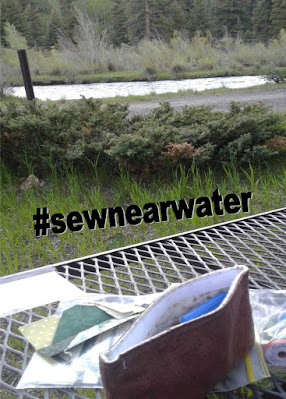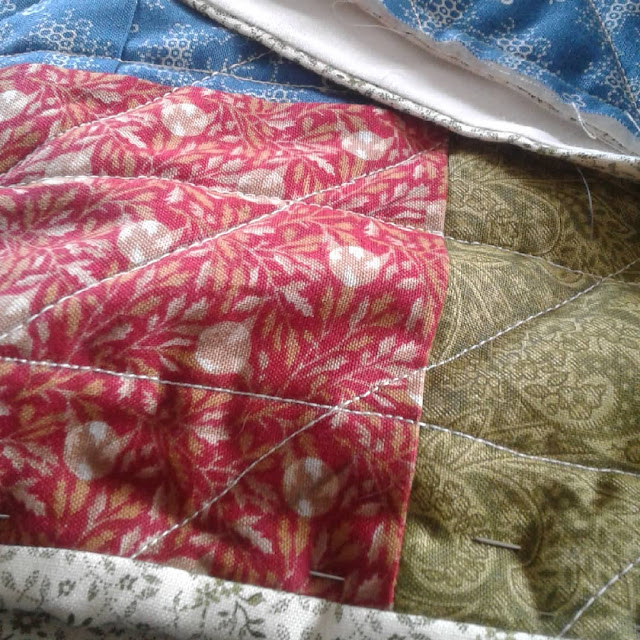Last week seemed to have flown by! Is it just me??? Or is time speeding up for everyone?
While time zipped right on by, I did manage to meet my goals... mostly
✔ I drew out the block, and tested the block for my customer's memory quilt... I have started cutting fabric. These blocks are 14-1/2" and will have sashing strips with cornerstones, creating a 9-patch look when joined together.
✔ I cleaned an organized the studio.... sorta. I did get all of the fabric that had been piling up put away in the proper place and I cleaned the closet in the studio. It was much needed. The closet where the fabric is stored remains a bit of a mess, but that will have to wait for another time. I don't have a before and after picture so you will simply have trust that I did do it. 😁
✔ Create a ballerina outfit for the paper dolls. Tutus were hand-sewn so I spent an afternoon watching Netflix...
❧ Prep a fish block representing Dave's time fishing on our last camping trip. I haven't done this YET... but there are plans for a couple more adventures in July so this will happen very soon.
I did work on a big dipper block last week when we made a quick trip to Pueblo for a day of shopping and to watch the oldest grand-daughter play T-ball. It is about half-done... this is the dipper part of the constellation.
❧ I will continue with the memory quilt... There are 12 blocks total. During a normal week, I would say I can get them done and have the top complete. But since we have two guests coming for a visit Wednesday and Thursday, I will try to get at least 6 blocks pieced.
Susan is a quilter, and recently acquired a long-arm machine at a bargain price so I am certain we will talk quilting, but we will probably do some local sight-seeing things with her and her daughter.
❧ A photo shoot with some sweet gals and the Paperdoll Quilts will take place this week! I showed the quilts to a young 13 year-old 4-H quilter and she loved them as well. I posted a tutorial over the weekend about how I made them. You can check them out by following the highlighted link above.
❧ And last, but not least... it is almost time to publish a new block in the Santa Fe Trail Sew Along. I have included a recipe that you will want to try... maybe at an Independence Day celebration. Watch for it on Thursday!
This is a popular week for vacations with the 4th of July holiday over the weekend. Whether you will be traveling or staying home, be safe! We will be celebrating with our church family after worship with a cookout and fun games. And we will probably go to our favorite lookout spot to enjoy the local fireworks.
Are you doing anything special on the 4th?
Leave a comment... I'd love to hear from you!
Gotta run!
Piece Out,
Melva
Linking with:
To Do Tuesday at Chris Knits & Sews
Mid-week Makers at Quilt Fabrication
Wednesday Wait Loss at The Inquiring Quilter
Stitch Sew & Show at Life in the Scrap Patch



















